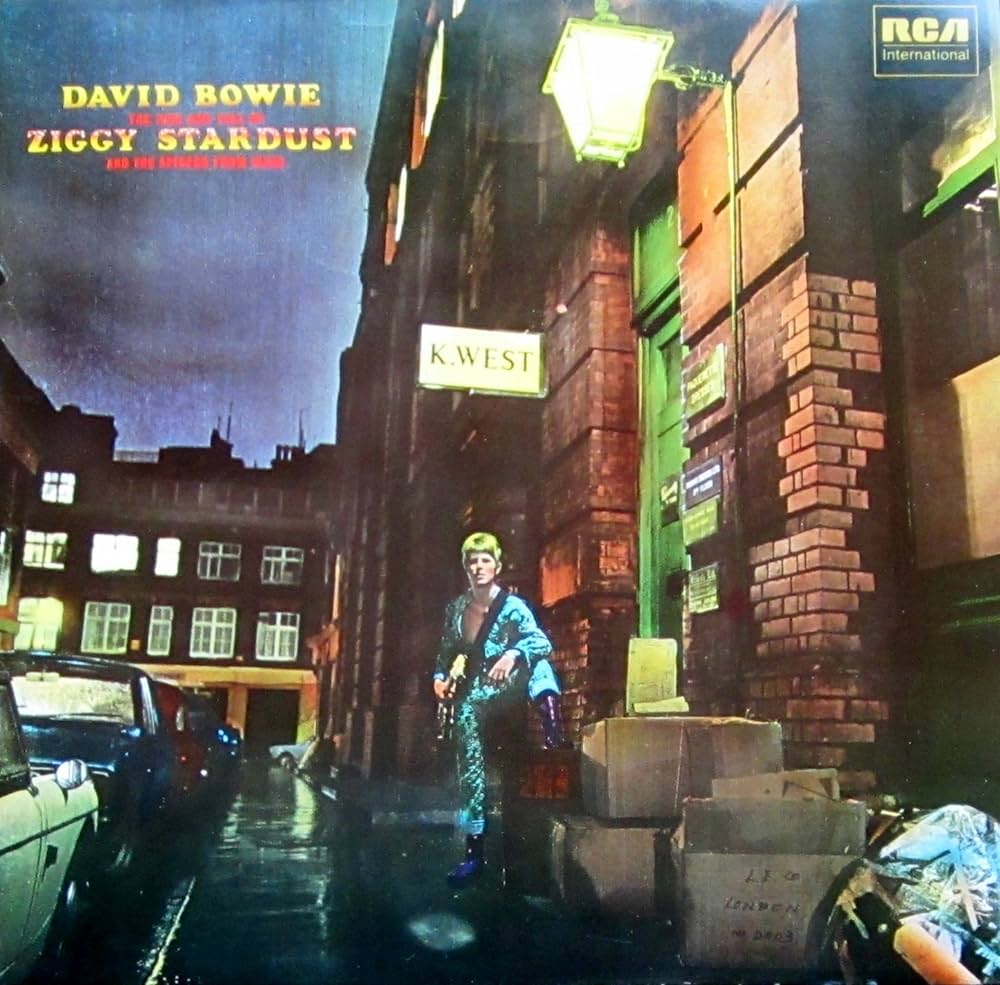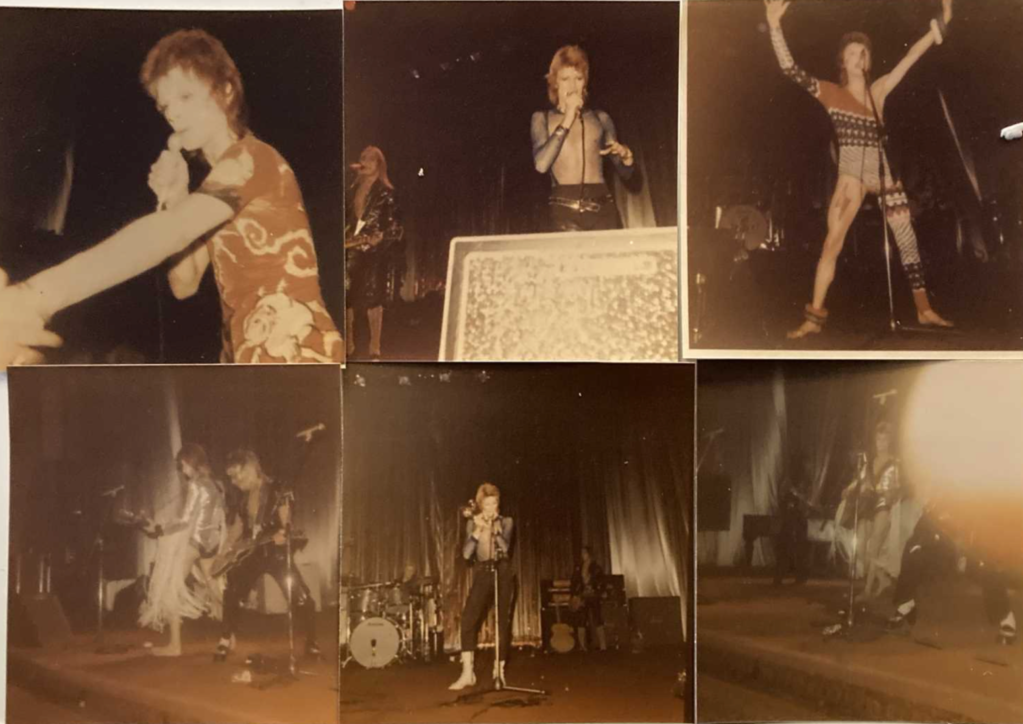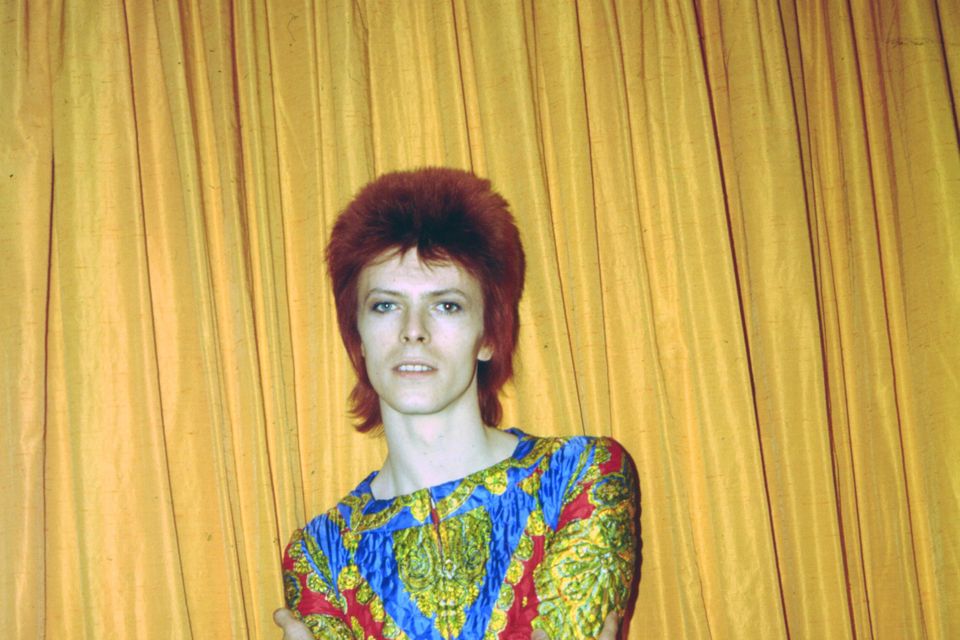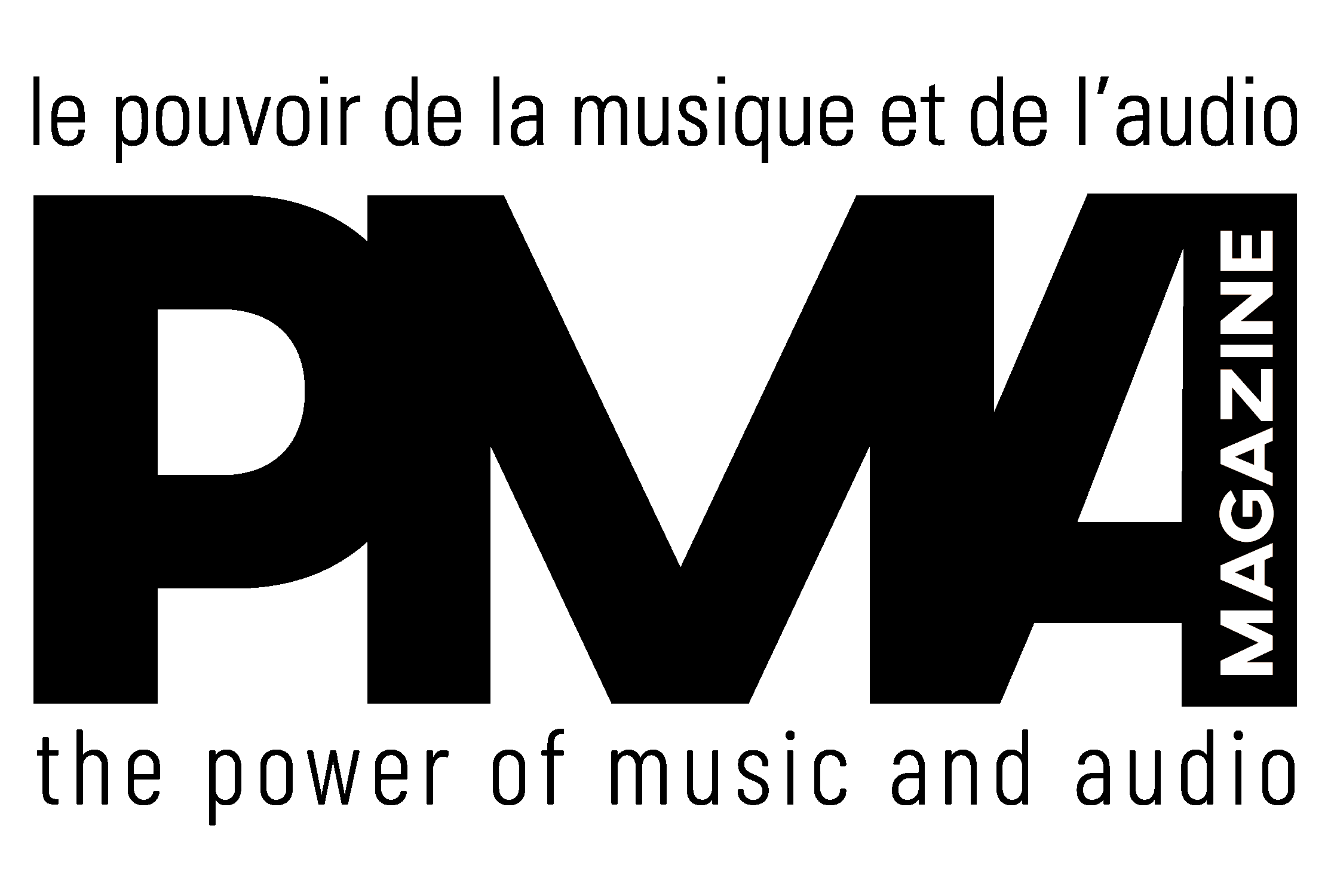
David Bowie’s The Rise and Fall of Ziggy Stardust and the Spiders from Mars is often seen as a turning point not just in his career, but in the landscape of rock music itself. Released on June 16, 1972, this album introduced the world to Ziggy Stardust, an androgynous, bisexual alien rock star. But the origins of Ziggy Stardust are rooted in the unassuming corners of southeast London, specifically at Underhill Rehearsal Studios in Greenwich.
The Underhill Rehearsal Studios
In mid-1971, Bowie and his band, which would soon be known as the Spiders from Mars, began rehearsing in a converted cellar at 2, Blackheath Hill. Designed and built by Will Palin, Les Copley, and Lance Spencer in 1971, Underhill Studios was an underground space where creative ideas flourished. It was here that Bowie, alongside Mick Ronson (guitar), Trevor Bolder (bass), and Mick Woodmansey (drums), refined the sound that would define Ziggy Stardust.

Recording at Trident Studios
After their time at Underhill, Bowie and his band moved to Trident Studios in Soho, where they recorded the bulk of the album from October 1971 to February 1972. Notably, these sessions included contributions from Rick Wakeman, who would later join Yes, on keyboard for Hunky Dory. The sessions at Trident were legendary for their creativity and intensity, with Bowie reportedly recording vocals for “Rock ‘n’ Roll Suicide” while lying on the studio floor to capture the song’s dramatic essence.
Producer Ken Scott, who worked closely with Bowie, noted, “David was always ahead of the game. He knew what he wanted and had this amazing ability to communicate it.” This collaborative atmosphere was crucial in shaping the album’s distinctive sound.
The Initial Performances and BBC Sessions
Before the official launch of Ziggy Stardust, Bowie tested the waters with a series of teaser performances and BBC sessions. On January 8, 1972, Bowie celebrated his 25th birthday at Haddon Hall, wearing an outfit that would later evolve into his Ziggy persona. Just days later, on January 11, Bowie debuted the Ziggy character during a John Peel session at BBC Broadcasting House in London. These sessions featured tracks that would later become iconic, such as “Ziggy Stardust” and “Hang On to Yourself.”
Iconic Album Cover and Early Gigs
The album cover for The Rise and Fall of Ziggy Stardust and the Spiders from Mars was shot on January 13, 1972, on Heddon Street in Soho. The shoot, conducted on a cold, wet night by photographer Brian Ward, captured Bowie in a futuristic outfit, foreshadowing the bold fashion statements that would become synonymous with Ziggy.
Bowie’s manager, Tony deFries, meticulously planned the rollout of Ziggy Stardust. Early gigs served as warm-up sessions, with the first notable performance at Friars in Aylesbury, Buckinghamshire, on January 29, 1972. Although Bowie performed without his signature red hair dye, this show marked the beginning of Ziggy’s journey to the stars.
The Official Launch at Imperial College
The official launch of Ziggy Stardust took place on February 12, 1972, at Imperial College in London. This performance was a major PR event, complete with music industry big-wigs and a French TV crew in attendance. Bowie introduced himself as Ziggy and performed seven tracks from the album. Despite a technical glitch that cut the sound during the first song, Bowie maintained his composure, engaging the audience with stories about his outfit.
A review from Melody Maker highlighted the show’s impact: “David Bowie stepped down from the stage into the audience until they picked him up and carried him out in the spotlight… But this was no fag show, a drag act full of lisping gestures and limp hands. The costumes…are the gilt on the lily, but they’re not the substance. The music is muscular, the performances witty and assured.”

The Rise and Fall of Ziggy Stardust and the Spiders from Mars was not just an album; it was a cultural phenomenon. It broke down gender norms, challenged societal expectations, and inspired a wave of artists to embrace their eccentricities. Bowie demonstrated that music could be more than just sound—it could be an experience, a story, a revolution.
The Ziggy Stardust tour, which began in February 1972, continued through late summer and included dates in the U.S., Asia, and Europe. The album’s success catapulted Bowie to international stardom, with the single “Starman” becoming a defining track.
Unreleased Tracks and Album Evolution
In a February 1972 interview with Jon Scott, Bowie revealed that several tracks recorded during the Ziggy sessions, such as Chuck Berry’s “Round and Round” and Jacques Brel’s “Amsterdam,” didn’t make the final cut. Bowie explained, “Round & Round would have been the perfect kind of number that Ziggy would have done on stage… but the enthusiasm of the jam probably waned after we heard the track a few times and we replaced it with a thing called ‘Starman’.”
Fashion and Style Influence
Ziggy Stardust’s fashion was as groundbreaking as the music. Bowie’s costumes, designed by Freddie Burretti, featured bright colors, futuristic patterns, and daring cuts. These outfits, combined with Bowie’s unique makeup, set new trends and inspired designers for decades. The lightning bolt makeup from the Aladdin Sane cover remains an iconic symbol of his glam rock phase.

Bowie’s Inspirations and Nipponophilia
Bowie’s eclectic influences shaped Ziggy’s sound and persona. His admiration for the raw energy of Iggy Pop, the avant-garde artistry of the Velvet Underground, and the flamboyance of Marc Bolan’s T. Rex converged to create Ziggy’s unique aesthetic. Bowie also drew inspiration from Japanese culture, particularly the theatricality of Kabuki and the androgynous style of the Japanese glam scene. His fascination with Japan would later manifest in various aspects of his career, further enriching his artistic output.
Personal Reflections and Fan Reactions
Fans were captivated by Ziggy’s otherworldly charm. Letters poured in, with one fan writing, “Ziggy made me feel seen in a way I never had before. Bowie gave us permission to be ourselves, no matter how strange.” This deep connection with his audience was a testament to the transformative power of his music and persona.
Cinematic Ventures and Beyond
Ziggy’s influence even reached the silver screen. Bowie’s alter ego inspired the 1976 film The Man Who Fell to Earth, in which he played Thomas Jerome Newton, an alien trying to save his drought-stricken planet. This film cemented Bowie’s reputation not just as a musician, but as an artist capable of transcending mediums.

The Farewell and Enduring Legacy
On July 3, 1973, Bowie famously retired Ziggy Stardust during a performance at London’s Hammersmith Odeon, declaring, “This is the last show that we’ll ever do.” This dramatic farewell marked the end of an era but also cemented Ziggy’s legacy in rock history.
Timeline
- January 8, 1972: Bowie’s 25th birthday party at Haddon Hall.
- January 11, 1972: Live debut of Ziggy persona at a John Peel session recorded at the BBC’s Broadcasting House in London.
- January 13, 1972: Album cover shoot on Heddon Street in Soho.
- January 18, 1972: Maida Vale Studios session for BBC’s Sounds of the 70s.
- January 22, 1972: Bowie declares, “I’m going to be huge,” in an interview with Melody Maker.
- January 28, 1972: Radio debut of Ziggy on BBC Radio 1.
- January 29, 1972: First warm-up performance at Friars, Aylesbury.
- February 7, 1972: Rebroadcast of BBC’s Sounds of the 70s session.
- February 8, 1972: Appearance on Old Grey Whistle Test.
- February 10, 1972: Toby Jug gig.
- February 12, 1972: Official launch of Ziggy Stardust at Imperial College.
- February 14, 1972: Performance at Brighton Dome.
- October 1972: San Francisco gig during the U.S. tour.
Epilogue: Stardust in Our Veins
As we look back on The Rise and Fall of Ziggy Stardust and the Spiders from Mars, its legacy shines as brightly as ever. Bowie’s creation remains a testament to the power of imagination and the endless possibilities of reinvention. Ziggy Stardust may have fallen, but his spirit endures, reminding us that in the universe of music, there are no limits.
In the end, David Bowie didn’t just give us an album—he gave us a galaxy to explore, one riff at a time.









Leave a Reply